Apple Announces The Apple Watch 4: Fully Custom SiP
by Andrei Frumusanu on September 12, 2018 11:30 PM EST- Posted in
- Mobile
- Apple
- Wearables
- Apple Watch Series 4
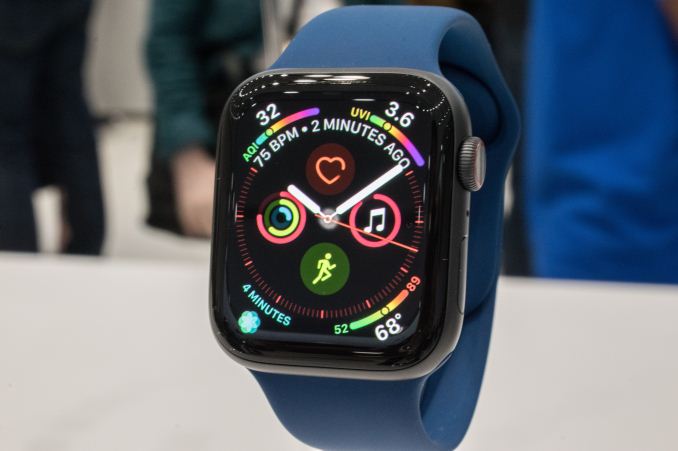
Today alongside the new iPhone XS, XS Max and the XR, Apple first introduced the new Apple Watch Series 4. The fourth generation of the watch sees a major revamp in its specifications and the most visible external design change to date.
Inside the new Apple Watch 4, we see Apple transition to a new SiP (Silicon in Package) design with a new S4 SoC containing for the first time a custom Apple designed CPU and GPU. We don’t have much information on the specifications here other than the new dual-CPU is 64-bit capable and is promised to perform twice as fast as it’s predecessors – which used Arm’s Cortex A7.
It’s to be noted that the 64-bit part of the new CPU might not be as clear as one might think, as there’s been some evidence (Credit @KhaosT) that the Watch might be running in ARM64_32 mode, which would be a 32-bit submode of AArch64 that allows for 32-bit pointers while retaining the ISA advantages of AArch64. Such a mode would be most optimal for a low-memory device such as smartwatch.
Prior generations of the Apple watch used a variation of an Imagination SGX core. For the S4 again Apple claims it’s a new custom GPU – again we don’t have any details here other than what Apple talked about in the presentation.
Finally the new S4 SiP includes new accelerometer and gyroscope functionality that has 2x the dynamic range in terms of measurable values, as well as able to sample data at 8x the speed. What this allows Apple to do is to collect a lot more data at higher accuracy and try to determine the scenario that you’re in. For example Apple claims the new watch is able to discern between falling, tripping and slipping just based on the movements that the person makes – whose detection is now enables by the new hardware sensor capabilities.
The new watch comes in 40 and 44mm sizes, and is fully compatible with prior generation Watch bands.
The core new characteristic of the new watch is the larger screen which now achieves a higher screen-to-body ratio on the watch. This is actually a pretty great improvement as the new screen feels a lot more pronounced.
To emphasize the new screen, Apple provides new watch faces with configurable information. Here the new watch allows for up to 8 complications which are at the disposal of the user. There’s also several new animated wallpapers available – these are pre-recorded videos that just play back on the watch face.
The new watch has also lost some of its thickness as it’s now 10.7mm versus the series 3’s 11.4mm. Here I’m still hoping one day we can see even thinner models, as it’s my personal least favourite aspect of smartwatches in general. Even though its thickness got reduced and it offers more performance and features, the new watch is said to maintain the same battery life longevity as its predecessors.
The sides of the watch have also changed quite a bit. On the left side we now have a larger speaker grill; Apple promises the new speaker to be a lot louder and surprisingly so for a watch. Unfortunately during the loud hands-on this was quite hard to evaluate.
On the right side we see the microphone being relocated between the button and the crown dial. The reasoning here is to reduce echo effects from the new more powerful speaker. The crown has been improved and now gives haptic feedback, trying to mimick the “clicking wheel” feel such as in more mechanical dials, or more aptly, the clicking of a mouse wheel when you scroll with it. The haptics here are enabled not by the crown itself, but by a vibration motor inside the watch.
On the back of the watch we don’t see much visible changes, however we now find a new improved optical heartrate sensor which is able to detect the heart rhythm.
What’s actually the most interesting in terms of the health monitoring capabilities of the new watch is that it actually includes for the first time ever a ECG (electrocardiogram) functionality in an over the counter consumer device. Here all you have to do while wearing the watch is to touch the crown – which serves as an anode and closes the loop created across your arms and heart.
Apple was very proud to be the first consumer device to enable this and had even received approval by the US FDA. It’s to be noted that this will beg some questions on how the feature will be implemented in other regions, as using and advertising such medical monitoring features might be disallowed if you don’t have regulatory approval.
Apple definitely is leading the smartwatch sector by a significant margin, and the company was even keen to point out that the Apple Watch is the most popular watch overall as well (Though that’s just because there’s no one dominating classic watch in a similar position).
The new Apple watch with GPS is available for $399 and the LTE variant comes in at $499 and are both available starting September 17th, with preorders starting this Friday the 14th. Overall I found the new Apple Watch 4 a lot more attractive than its predecessors – though it’s still a quite steep price point.


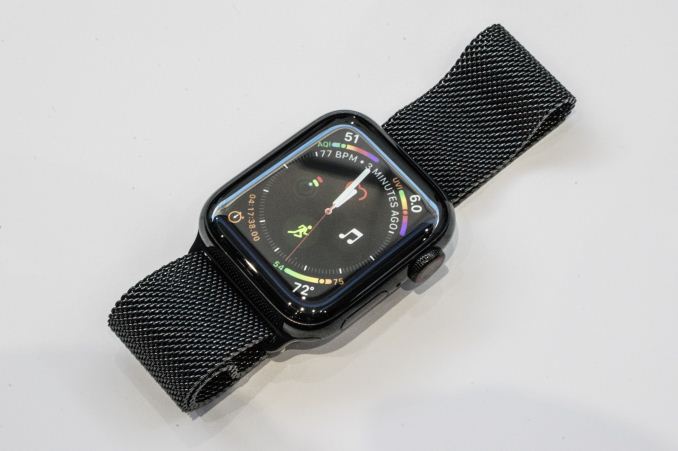
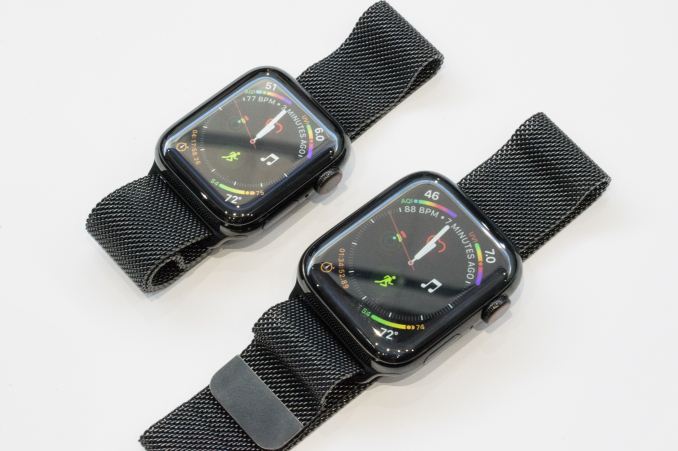
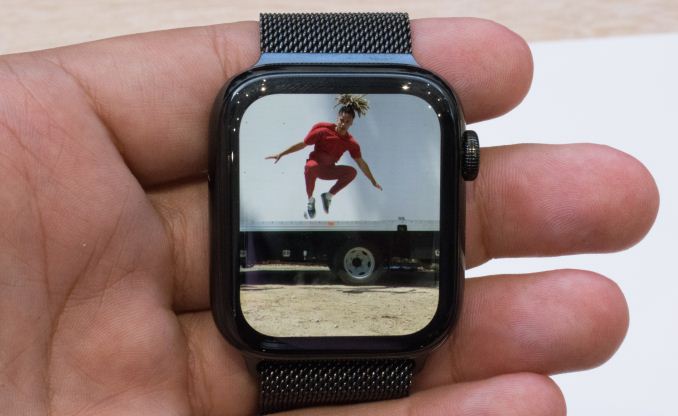
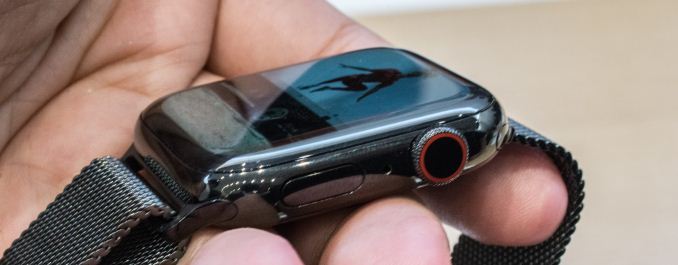









88 Comments
View All Comments
solipsism - Saturday, September 15, 2018 - link
As stated many times already, it can never get "approval" in the since you're using because it's not an option for a Class II device. It's just nomenclature, but the FDA refers to that as "certified." That said, the FDA doesn't fine anyone for using "approval" for Class I and II devices because it's still technically an approval to get their certification and to get their certification it has to be approved.solipsism - Saturday, September 15, 2018 - link
Being a single-lead ECG doesn't mean it's not a "real" ECG. It's simply different from a 12-lead ECG. Regardless of the anti-Apple narrative you're pushing it's still an electrocardiogram.name99 - Thursday, September 13, 2018 - link
That's the wrong question.You are making the same stupid mistake as the people who said phones will never replace DSLRs, or MP3s will never replace CDs --- you're fantasizing that they solve the same problem.
Just like the camera you actually HAVE on you is more useful than the camera you have sitting at home, the EKG you have AVAILABLE is more useful than the EKG sitting in the hospital.
The use case for this device is not some doctor in a US hospital doing pre-heart-surgery prep; it is the person who has heart arrhythmia or some other intermittent condition that's difficult to describe to a doctor and that only presents rarely. IF, when the condition happens, you can immediately grab a snapshot via a simple EKG, you have SOMETHING useful.
Yes, it's not perfect, no-ones claiming it is. But you don't need perfection for a specialist to look at a low quality EKG, rule out 7 of 8 possible explanations, and know what the appropriate diagnostic is for the eighth possibility.
id4andrei - Thursday, September 13, 2018 - link
No. That's the correct question. These wrist computers are making use of inaccurate sensor data to create a false sense of security/insecurity and pose as serious medical devices. They actively seek FDA tie-in of some sorts to sell more units. Precision is paramount if you want to brag that your device is life saving; an approximation is not good enough. Don't rely on your wrist computer, keep visiting your cardiologist even if the gadget tells you not to.repoman27 - Thursday, September 13, 2018 - link
100% FUD.V900 - Friday, September 14, 2018 - link
Nope, not FUD the man has a very good point.Why do you think real ECG machines use so many electrodes?
Why not use just two, like the Apple Watch?
Could it be, that there is a huge variety of error considering everything from individual biochemistry to the minute nature of the voltage recorded?
You sound like someone exhibiting the classic, flawed Silicon Valley mentality, not realizing that a lot of very smart people already took a crack at this.
repoman27 - Sunday, September 16, 2018 - link
You're dogmatically clinging to an opinion for which you have zero empirical evidence to support. I am making no claims as to the quality of the Apple Watche's ECG feature until I see some data regarding how it actually stacks up.However, I also clearly remember a time when everyone didn't carry a camera and GPS in their pocket everywhere they went. The first cameras in phones sucked, and the GPS's were of questionable accuracy. Smartphone cameras still aren't nearly as good as a full sized DSLRs or pro gear, but for most folks, they work quite well and end up being the "best camera" because they're the one the person always has with them. Same goes for GPS navigation. Most people simply do not need a dedicated GPS, and what their phone can offer for turn-by-turn navigation is often better than what their car might have built in.
The Silicon Valley mentality is that if a lot of very smart people are all working on the same problem, it probably has merit, because the first person to come up with a successful strategy to market a solution will probably make a lot of money. Your mentality is apparently that the first smart devices weren't smart enough so we should have just stopped there?
Also, while the benefits of widespread ECG monitoring for healthy individuals may be questionable to non-existent, has the accuracy of similar, single-lead, OTC ECG systems such as AliveCor's Kardia ever been cited as being a problem? When my doctor asked me to perform at home monitoring of my blood pressure, should I have reported her for malpractice because obviously home blood pressure cuffs aren't as accurate as the one she has at her office and the data they provide is therefore useless? The ability to self-monitor can be beneficial to both patients and doctors even when it is understood that the accuracy may be less than what is achievable with vastly more expensive and specialized equipment.
In this case the FDA has decided that Apple's ECG and the algorithms their software employs are accurate enough that they can be sold over the counter, direct to consumer, without requiring review by a certified cardiologist prior to unlocking end user access to the data. id4andrei is hell bent on maligning this device before it even reaches customers and is spewing a lot of nonsense in the process. The FDA starts by classifying medical devices, and that in turn determines what degree of premarket approval is required. It does not work the other way around, and a Class III device is in no way "better" than a Class I or II device. A pacemaker is not "better" than an adhesive bandage, but clearly one deserves more stringent oversight than the other.
id4andrei - Thursday, September 13, 2018 - link
Andrei, the ECG feature is not FDA approved but rather FDA cleared. It is not the same thing. FDA approved devices must pass rigorous FDA testing.waldo - Thursday, September 13, 2018 - link
Would love to see a link to that. I see it receiving a De Novo classification. https://www.apple.com/newsroom/2018/09/redesigned-...I don't find anything related to a separation between approval and clearance.
repoman27 - Thursday, September 13, 2018 - link
Approval is only required for Class III devices (those that sustain or support life, are implanted, or present potential high risk of illness or injury). Clearance via premarket notification [510(k)] is all that is necessary for most other devices. So the distinction isn't really meaningful—for any given device you need either clearance or approval, but never both.However, the ECG feature of the Apple Watch was considered novel and thus it would be automatically rated Class III. Therefore Apple had to file a "De Novo" classification request, presumably to get a Class I rating for the Apple Watch. At which point FDA clearance, not approval, would have been the standard required.